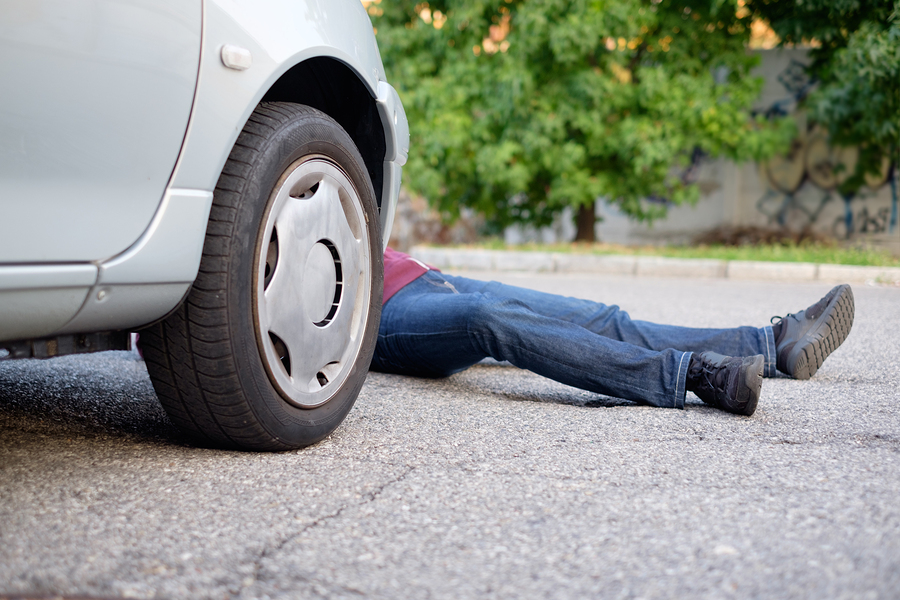
Managing the Risk to Prevent Injury and Student Death
When risk is managed, injury, student death, and resulting litigation are less likely to occur. All too frequently, it is only after a tragedy that officials look back and ask, “How could this have been avoided?” Risk management is a far-reaching topic, but when focused on the professional standard of care in educational and other child and youth-serving organizations, it comes down to protecting the safety of participants in the care and custody of a school or other organization.
Cases involving allegations of mismanagement, negligent supervision, failure to inspect equipment or premises, and other topics for which we provide forensic consultation and expert witness services are reviewed from the primary standard of care in the industry — protecting children from harm. This standard is accepted in the United States and Canada alike. An identified risk can unnecessarily place a child in harm’s way if it is not managed to reduce the likelihood of injury or student death.
Child and youth-serving organizations, such as public and private schools, residential programs, camps, and daycare centers, have a responsibility to protect the safety of children who participate in their programs. Managing risk in these organizations means actively and regularly assessing existing risks and how they can be effectively avoided. It also requires the development of policies that define the risks and how the organization mitigates them through regular training of students, staff, and parents; considers foreseeable hazards, given the circumstances of the program; inspects equipment, facilities, and grounds; sets standards for child supervision; makes sure risks are communicated to administrators and to those in charge of supervising children; and most importantly, enforces policies on a consistent basis. When these elements are in place and effectively communicated and enforced, there is less possibility that the organization will be held liable for the injury or student death. Without these elements in place, a plaintiff will be able to argue that the risk was there but was ignored by the organization.
Managing Foreseeable Risks of Harm to Prevent Personal Injury or Student Death
The concept of risk management emerged in the mid-1970s in relation to physical education and sports, camping and adventure activities, and parks. The American Camping Association added an accreditation standard regarding a risk management plan in the 1980s. Schools and other organizations, particularly since the Sandy Hook Elementary School shooting in 2012, recognize the potential for liability and are taking their responsibility to protect students from harm more seriously. However, the focus over the past five years has been mostly on the development of emergency-response plans when someone in or near the school poses a threat to student safety. These plans require that schools “lock down” the building in light of a threat — and in some circumstances, a school’s quick response has deterred tragedy.
But many other dangers and hazards that are often overlooked can increase the likelihood of personal injury, student death and, consequently, litigation. Consider these real-life cases for which we have been engaged: A third grade child is killed while crossing the street in front of his school; pit bulls attack a high school student participating in a physical education class in a park across the street from the school; five high school boys drown when they take a boat onto a river at night during a leadership training program. In all of these examples, questions arose as to whether administrators considered the foreseeability of these incidents and whether they failed to meet the standard of care to reasonably protect children from harm.
In the case of the third grader who was killed while crossing the street, the school principal was aware that cars parked under “no parking” signs on that street. When a child runs out from between cars, as was the case here, neither the child nor the driver of a vehicle will likely see each other until it’s too late. To add to the risk, the school did not provide crossing guards at the corners, and teachers let their students out unsupervised at the end of the day. After any risk is identified and assessed, the next step is to establish procedures to mitigate or eliminate the risk. The principal could have organized student dismissal differently, requiring teachers to escort their students out of the building and to the corner, where they could cross safely. When a child is injured or killed and the allegation is that the organization acted in a negligent way, the defendant typically reviews how the child was injured and identifies ways to avoid a similar occurrence in the future.
Similarly, when a school allowed the physical education teacher to use the city park across the street from the high school, it already knew that one of its teachers was seriously attacked by off-leash dogs on school grounds, and it was known that the park had a high crime rate. Classes were regularly held in an area that any reasonable administrator would consider dangerous, especially when classes were not monitored by someone from the school like a security office. One day, when an owner let his dogs off-leash, the dogs attacked one of the students, causing serious physical and emotional injury. This tragedy could have been averted if the school adequately assessed the risk and made an informed decision about allowing the teacher to regularly take her class to the park. Failure to adequately assess the risk of having students off school grounds, and in particular, in a known dangerous area, placed them in harm’s way.
In any situation where children are in an unfamiliar setting, such as on a field trip, those in charge have a responsibility to review the situation, identify the risks, and mitigate those risks. In the example of five high school students who drowned, the boys snuck out of a cabin in the middle of the night and went to the riverbank. They ignored the dangerous current and prominent signs to stay off the water, then took unsecured boats onto the water. The students were under the supervision of their school chaperones at a camp that was responsible only to provide seminars and educational programs during the day. In this example, the questions revolved around who had the responsibility to assess risks and protect the students. Did the camp assess the risk of drowning in the river and did it warn invitees appropriately by posting signs? Did the school assess the risk of students leaving cabins unsupervised during the night and the foreseeability of injury? Did the 17 and 18-year-old students have a responsibility for their own safety?
The school in this example had a policy that required at least one adult chaperone to supervise each of the four cabins rented by the school. When such a policy is developed, there is a reason for it — a risk has been identified and a determination has been made that by acting in a certain way, such as providing a number of chaperones with specific duties, the risk will be minimized. In this case, when the students left the cabin there was only one chaperone present. The others had moved to another cabin with the other adults, leaving the students with the ability to sneak out. One does not have to identify the risks to realize that high school students who leave their cabin in the middle of the night unsupervised can get into mischief that can result in harm. The camp was aware of the risk of drowning in the river and posted signs to warn invitees about it. The students were part of a special program and were selected as leaders, and there was nothing in their individual records that would cause a reasonable school administrator to be concerned that they would not be able to heed “Do Not Enter the River” warning signs. Ultimately, in a case like this, there may be shared responsibility for student deaths. The point is that each organization must assess its duty to the students, invitees, and others involved, determine the risks of harm, and develop policies and procedures to manage the risks.
Risk Management and Care of Students with Disabilities
Risk management also applies to the supervision and program development of students with disabilities. Often, children with specific disabilities may act in ways that require the school to review their behavior and develop a behavior intervention plan, assign an assistant teacher to the classroom or to escort the child through the school or on class trips, or to provide counseling or social-skill development classes for the child. We consider the unique circumstances of each case, and we review and analyze standards established through written policies and procedures and through unwritten customs and practices of an organization. An organization that should have (by statute or regulation), or could have (by moral or professional standard) acted affirmatively but did not manage a risk that resulted in injury to a child, may be liable.
On the other hand, risks can never be completely eliminated. Often, even when schools and other organizations have adequately assessed risk, developed policies, rules, and, regulations to manage the risk, properly communicated them to employees and participants, and adequately enforced the rules, accidents and injuries still occurred and defendants may not have directly contributed to the condition that caused injury. This is especially true in cases where the participant acted so quickly that no reasonable supervisor of that person would have been able to stop the behavior before injury occurred. In the defense of such cases, the important thing is that the organization recognized the risk of harm, managed the risk effectively, developed policies and procedures to eliminate the risk, developed and implemented student programs and services such as individualized education programs, communicated with supervisors, and enforced its policies.
It’s in the review and analysis of the details of a case where such questions are answered and an expert opinion can help to settle a lawsuit or provide information at trial for a verdict.


